Colca - A Grander Canyon?
![]()
During the last billion years or so, the waters of the Rio Colca tumbled and cascaded from the high Andes of southern Peru, eroding vast quantities of rock and soil along its way to the Pacific Ocean, creating Colca Canyon. By some measures, the Colca Canyon is the largest or deepest in the world, and is compared favorably with Grand Canyon in the US. We were determined to see for ourselves.
We boarded a public bus at Arequipa's Terrapuerto bus station for the trip, traveling out of the city and into the parched, sparsely vegetated hills and valleys surrounded by volcanic peaks.
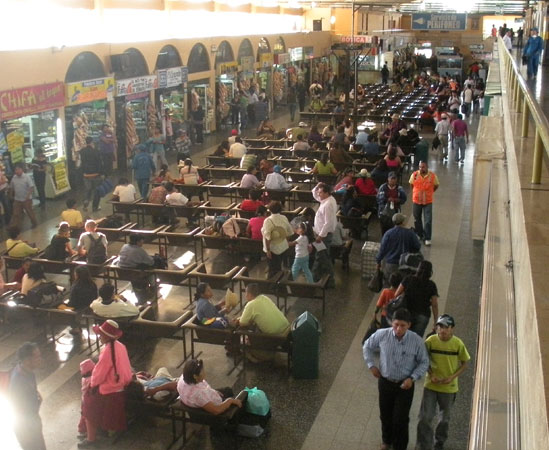
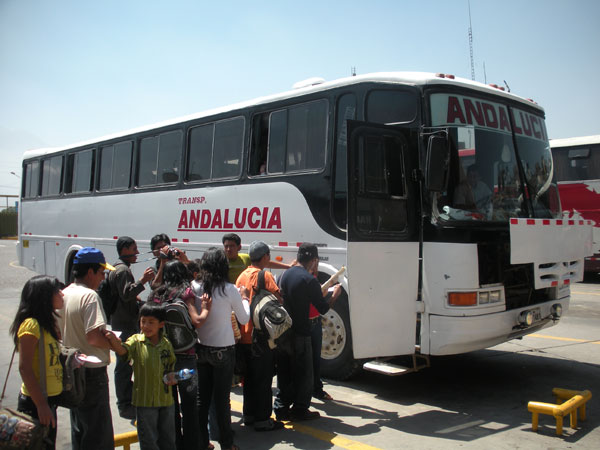
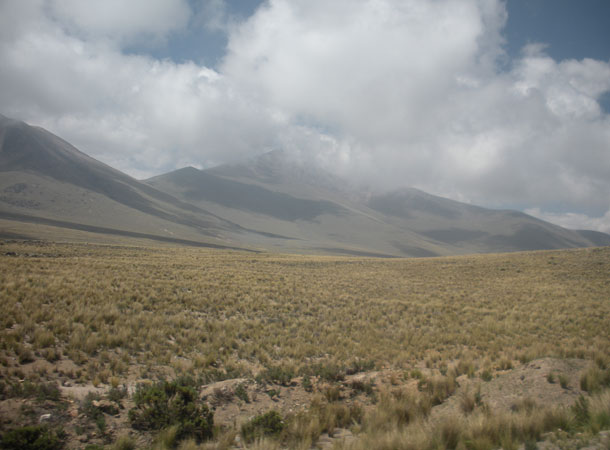
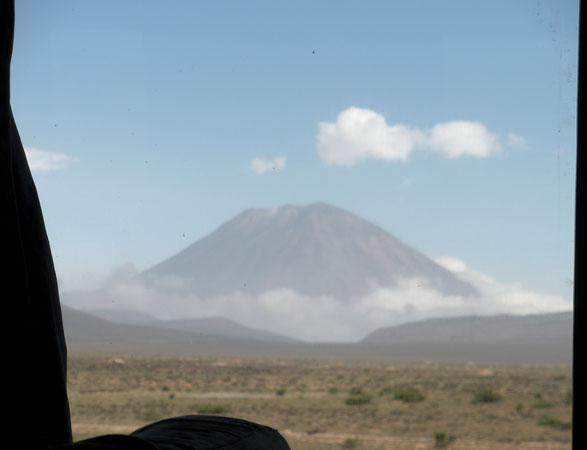
Before long the pavement ended and the road became hard packed gravel and rock, dusty but not too bumpy. The road climbed up to the altiplano, a vast grassland where vicunas safely grazed. This was the Aguada Blanca Reserva Nacional. Bouncing and zigzagging onward, the bus continued to climb up up to the Mirdador de los Volcanes, at 4850 meters (15,900 feet) the highest point of the trip.
Continuing on, the road made a steep winding descent into a verdant valley, past green terraced hillsides, toward Chivay, nestled below.
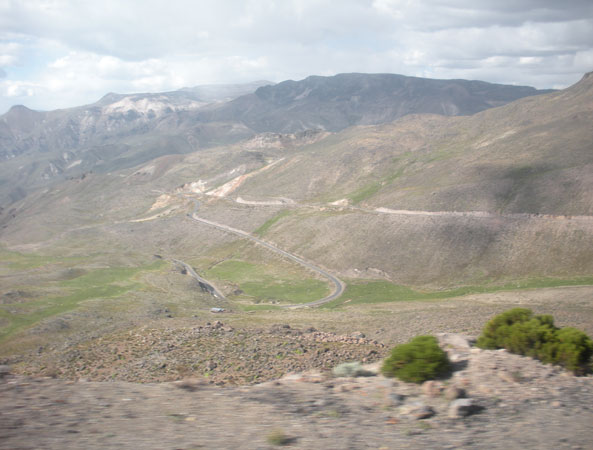
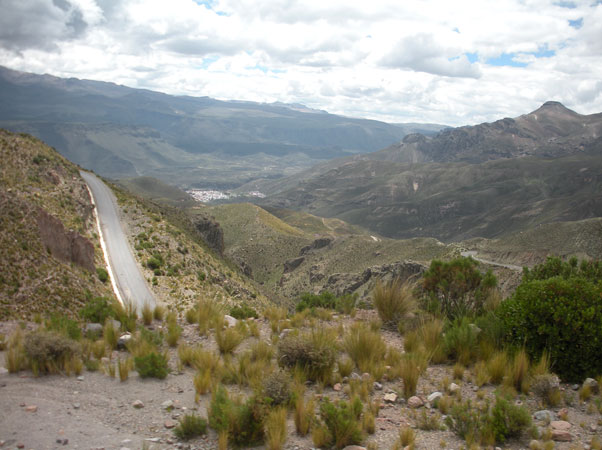
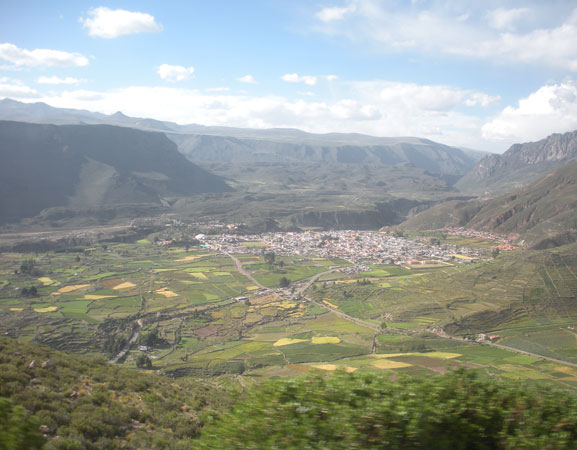
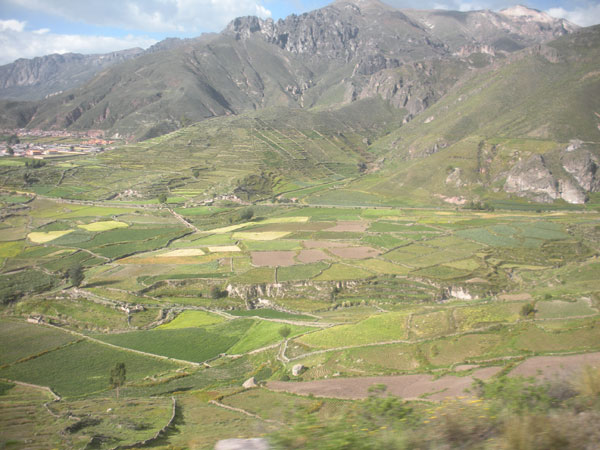
After a very brief stop, we continued on, beginning to comprehend the geology of Colca Canyon. There was no "rim" as such but rather a broad valley, gently sloped in places, steep sided in others, surrounded on both sides by great peaks. The views were fantastic - up on one side toward the green terraces and high peaks and down on the other over the rim into the gorge and across to sheer rock faces surmounted by summits.
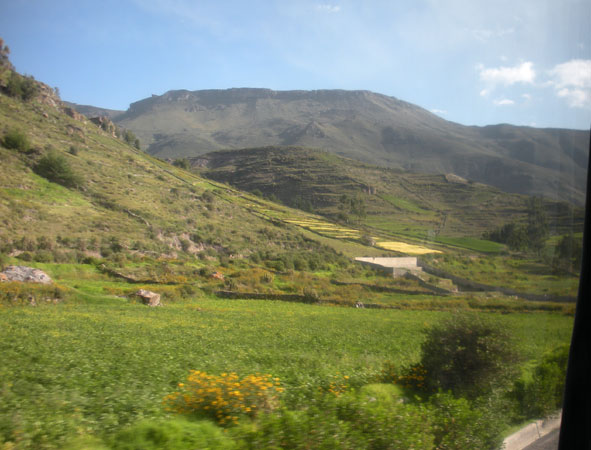
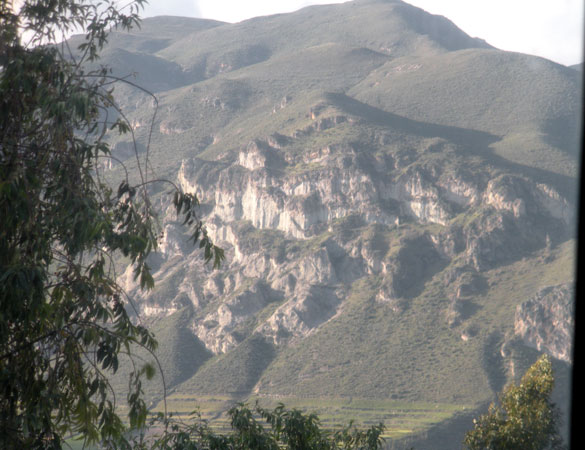
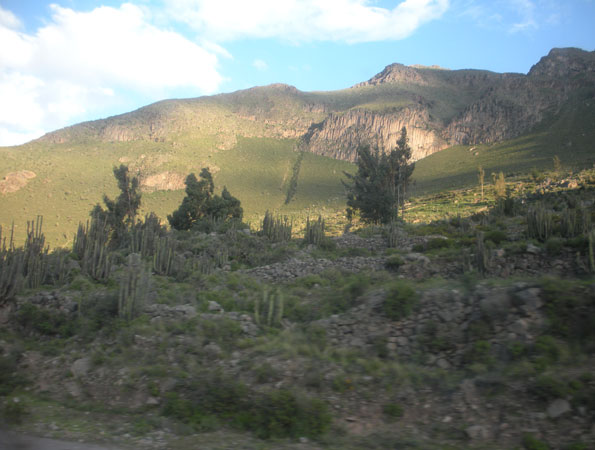
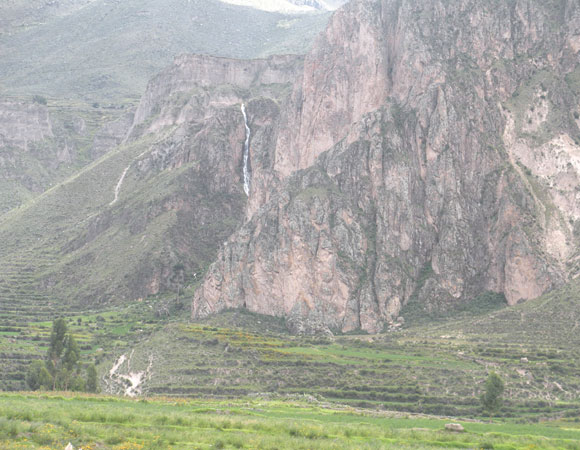
In the lowest part of the valley, the rio had cut a deep gorge. Of course, this gorge had a rim!
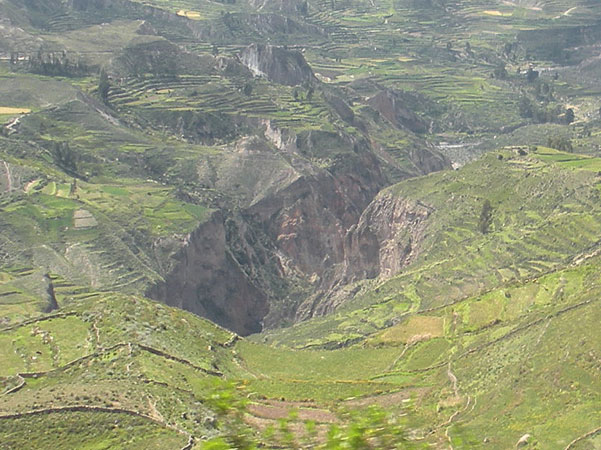
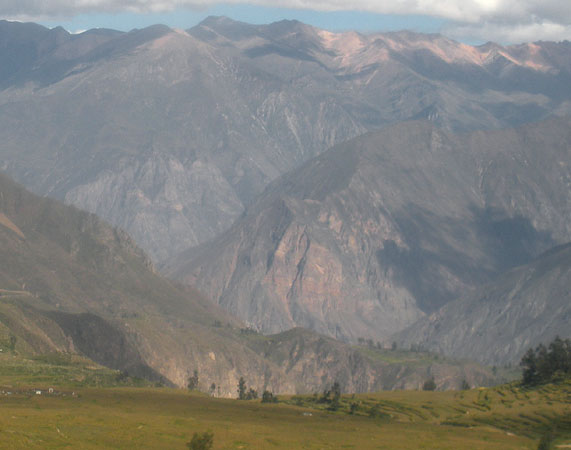
Our bus passed through several small villages each with a central plaza dominated by a great Spanish style iglesia.
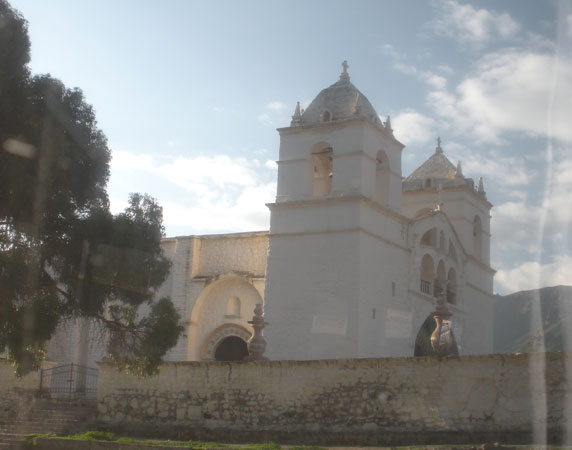
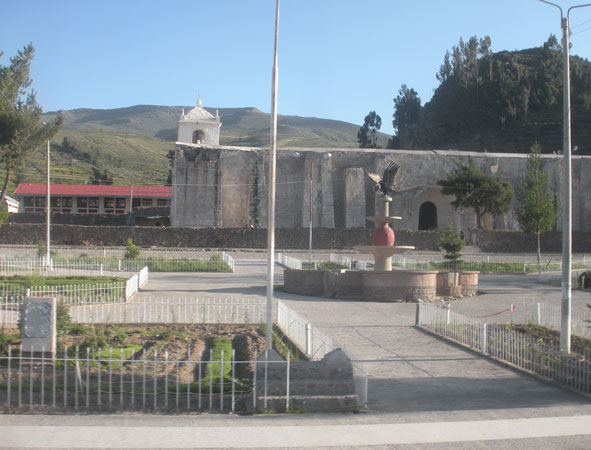
It stopped often to pick up or let off passengers, for whom our bus was the only means of travel. Many wore traditional dress, the women carrying babies on their backs in shawls of brightly woven cloth. In places the bus slowed to share the narrow road.
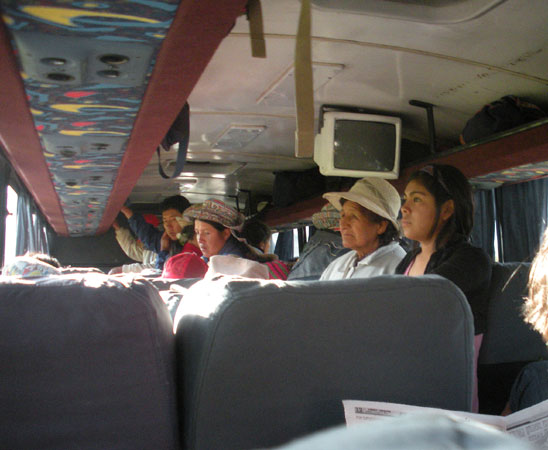
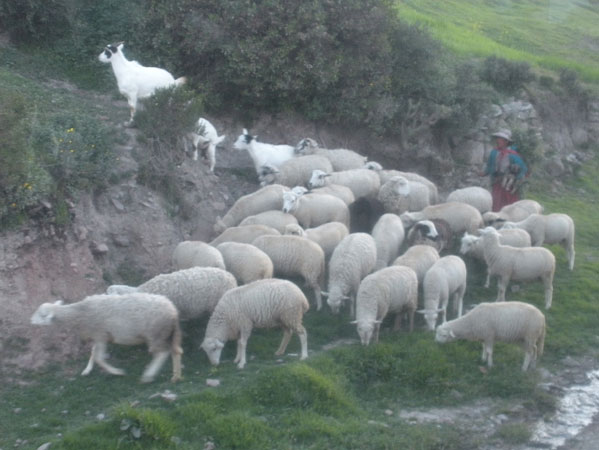
The road was often near the rim of the gorge. We marveled at the sheer dropoffs and the views of smaller villages below, accessible only on foot.
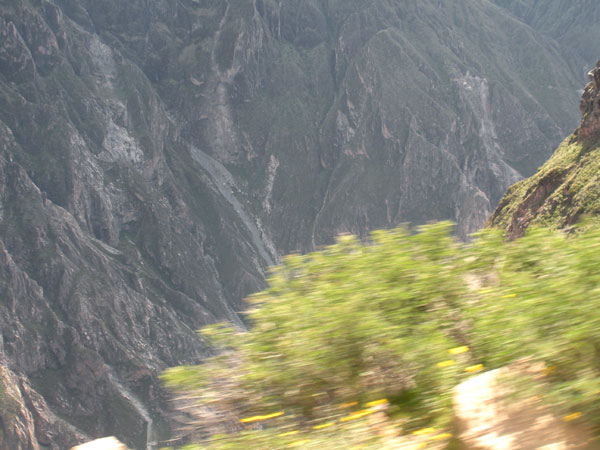
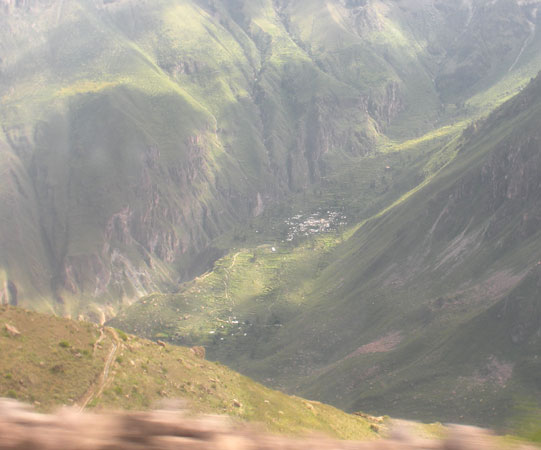
When we finally arrived in Cabanaconde, after a bit more than six hours, we were more than ready to be there! We found our way to the cafe of the Hostal Valle del Fuego where we were greeted by Meaghan, a young woman who spoke American English. She directed us to the hostal just down the calle where we met Jamil, brother of our friend Edwin from Arequipa. He showed us to our comfy room.
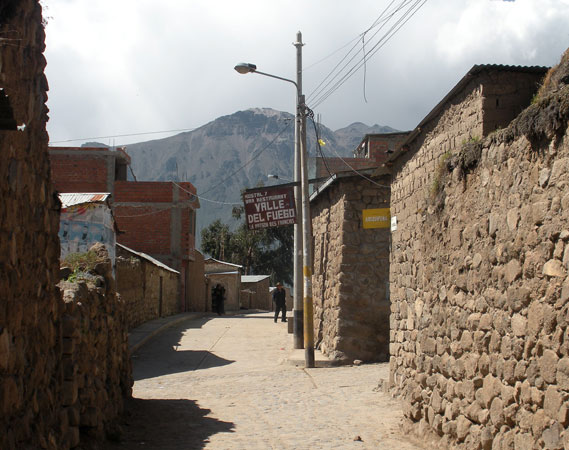
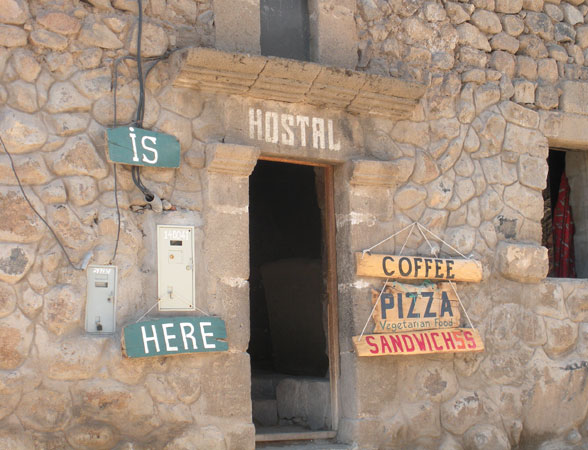
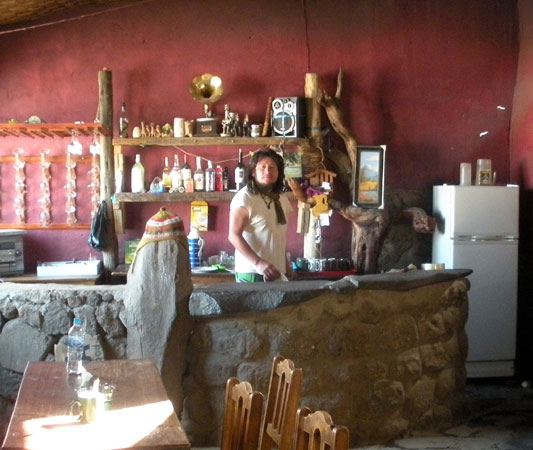
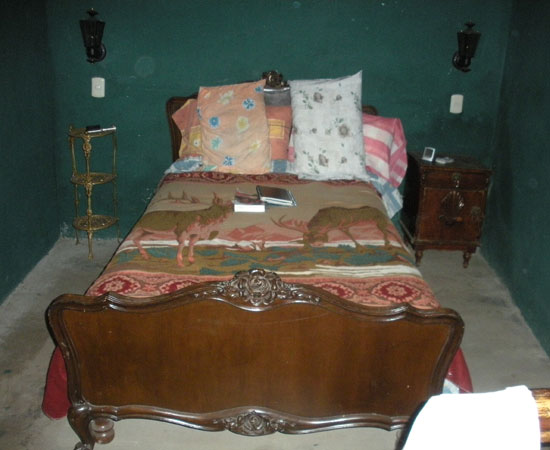
We were happy to sip coca tea and just relax until dinner time, while watching the sunset over the gorge.
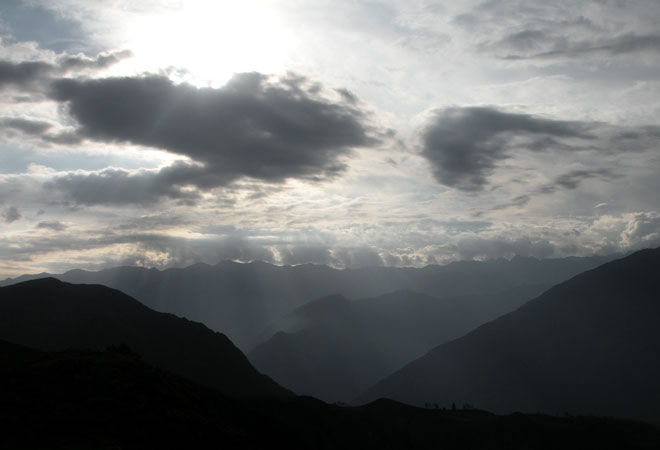
Over dinner we chatted with Meaghan and learned she had left her home in Minnesota to travel for several months through South America. We shared travel stories and exchanged email and website addresses, hoping to stay in touch. By now the temperature had dropped dramatically, so we hurried back to our room to huddle under the thick blankets!
Next morning, awakened by crowing roosters, singing birds, and a mooing cow, we dressed warmly and walked in the brisk air to the cafe for a hearty breakfast and more coca tea. We decided to listen to our bodies to gauge the proper level of activity. As we walked, we could feel the breathlessness caused by limited oxygen so we decided to have an easy day and explore the miradors (viewpoints) that were close to the village.
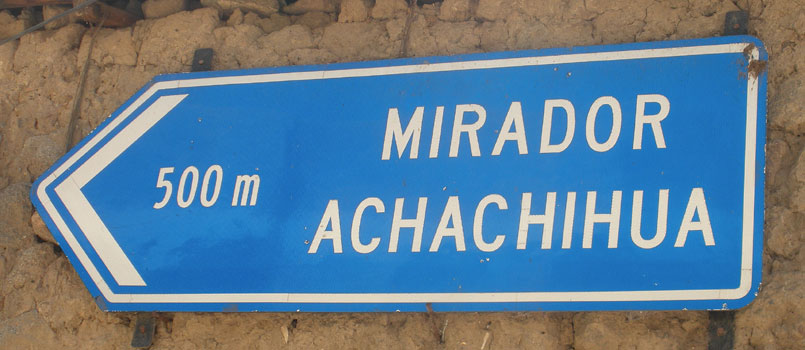
This did not disappoint! The miradors offered vistas of high snow covered peaks, pre-Inka terraced slopes, sheer walls of rock that dropped down to the river rushing below. A great bird soared past - a condor! We stood enchanted, but didn't get a picture.
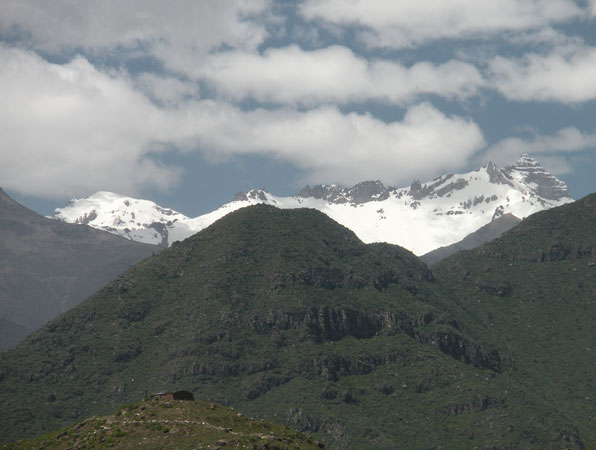
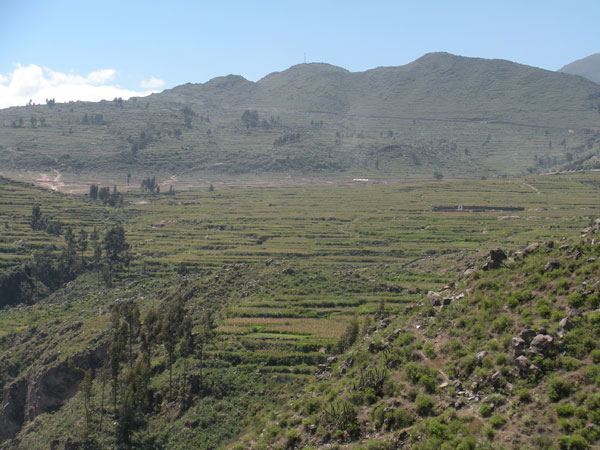
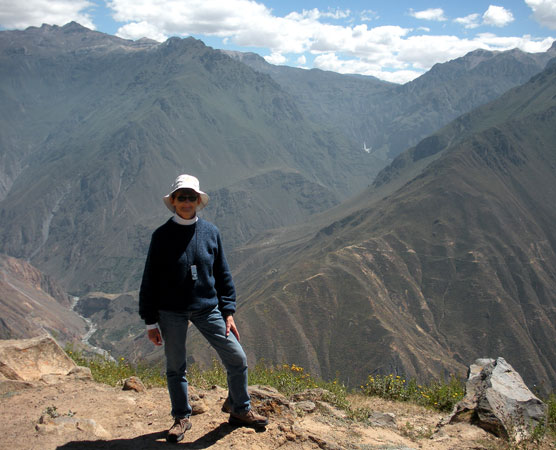
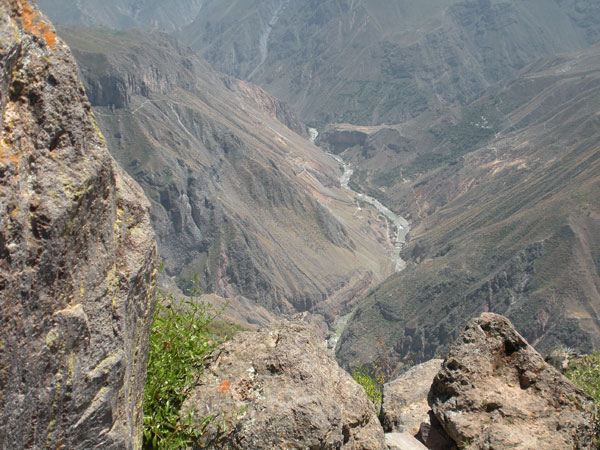
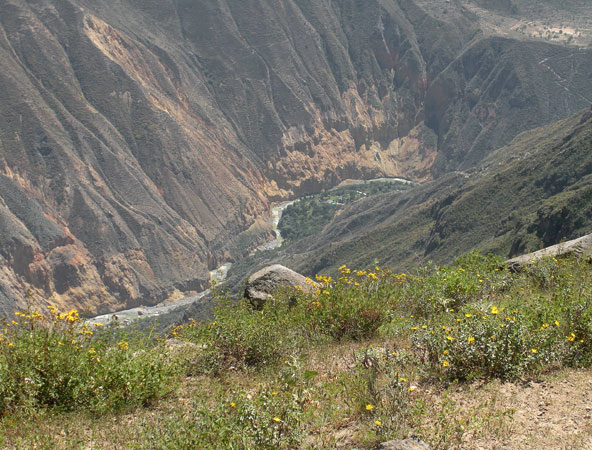
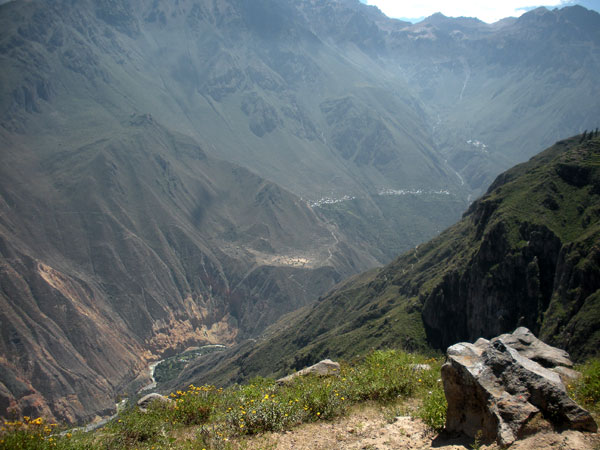
Sitting on the very edge of the canyon, Cabanaconde offered a particularly stunning aspect for such a tiny village. The surrounding mountains rose grandly above the roofs of the buildings and the handsome iglesia echoed the heights with its walls and bell towers. A nicely landscaped plaza offered a welcoming community gathering place surmounted by a bright eyed happy condor.
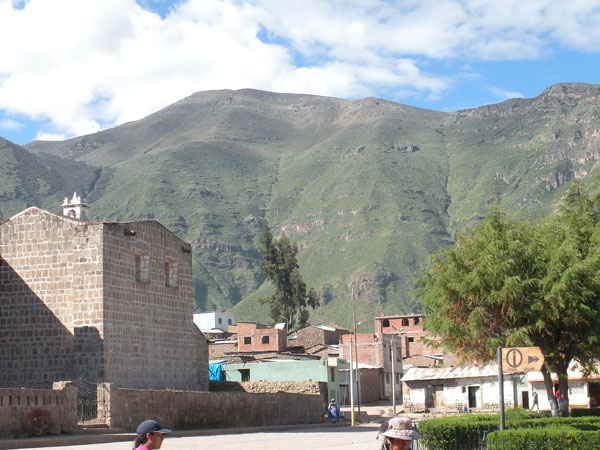
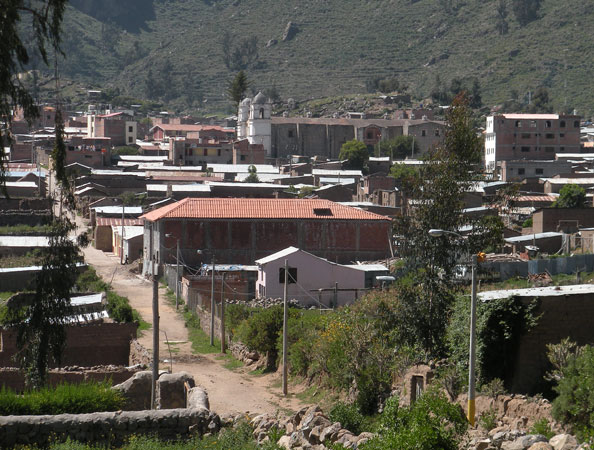
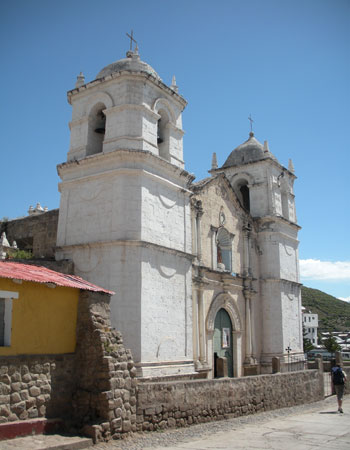
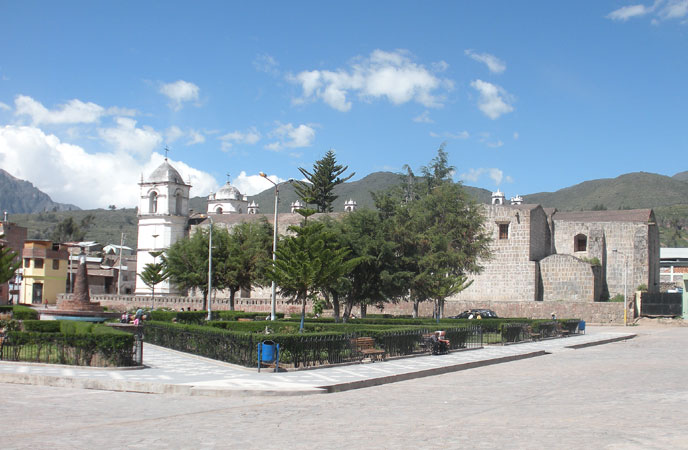
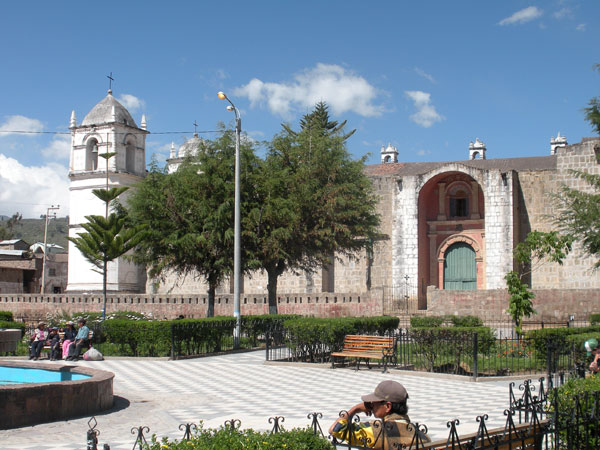
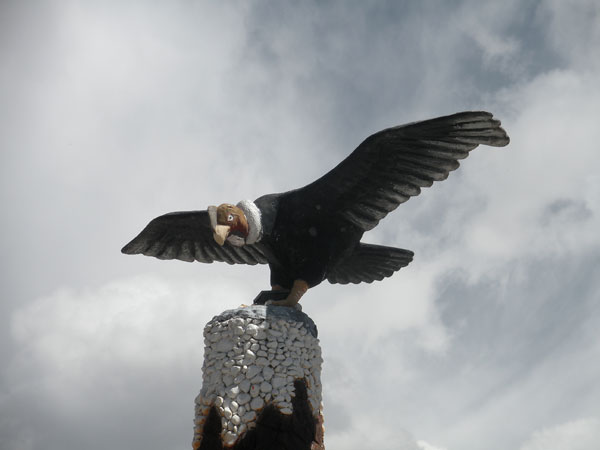
In the late afternoon a group of young women strung a net across the calle on one side of the plaza for a lively game of volleyball. That evening, we returned to the cafe for dinner and then headed early to bed for warmth.
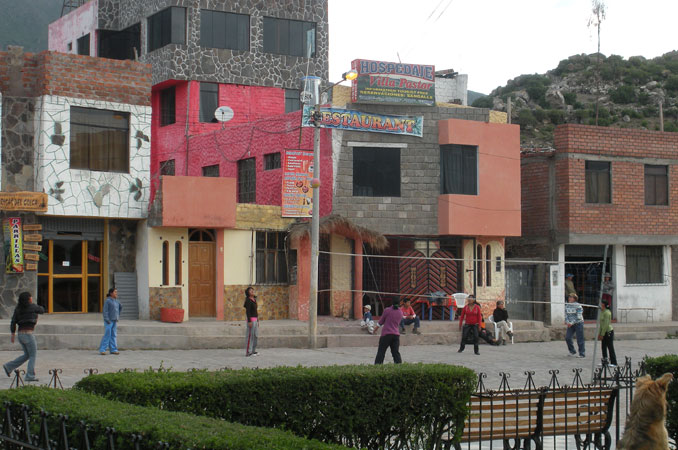
The village itself offered a fascinating view of life in this isolated piece of the world. There were few cars. Men herded cows out to the pastures, others urged along burros loaded with packs of construction materials or sticks, shepherds kept watch over sheep as they grazed, a woman milked that mooing cow. Folks chatted on benches overlooking the plaza.
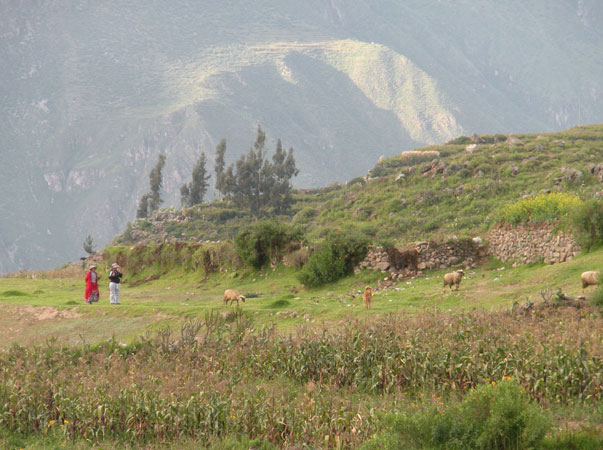
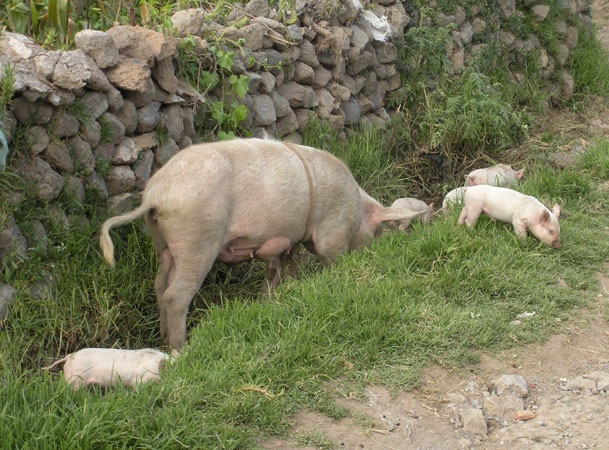
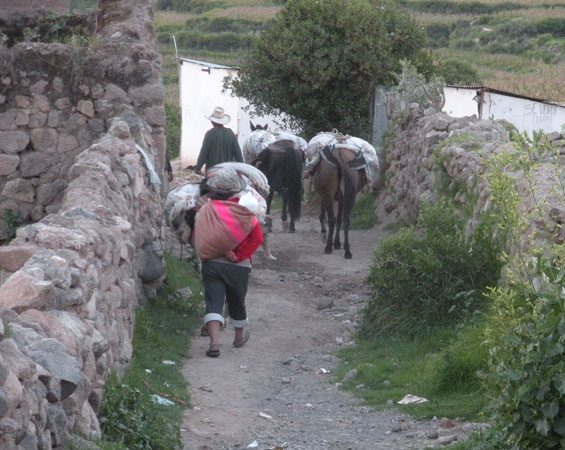
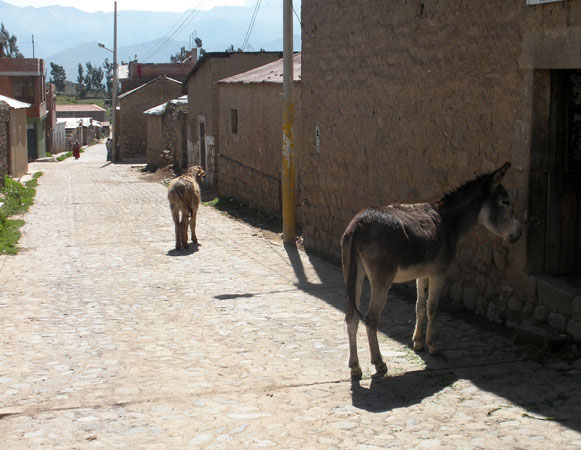
In the morning, the birds, roosters and cow repeated their wake up calls as we packed to leave. After breakfast, we lined up with other passengers and took our seats on the bus for the long ride back to Arequipa.
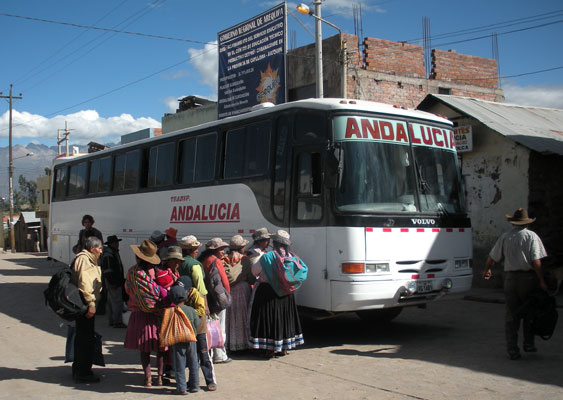
The canyon and its soaring peaks and green slopes was just as astonishing the second time around.
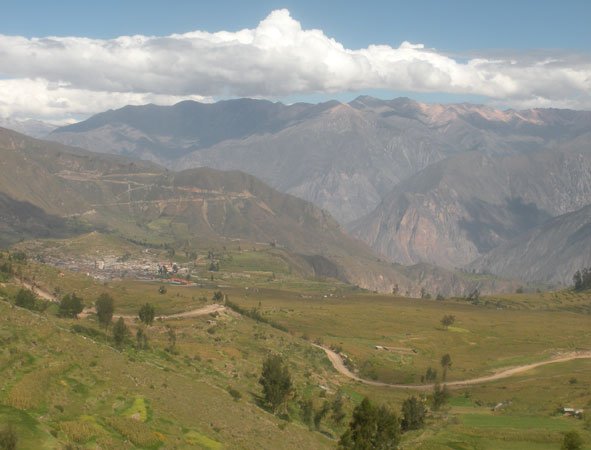
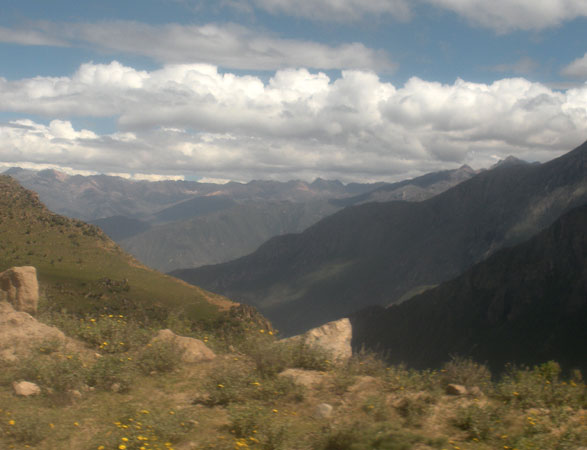
Now on the left side of the bus, we had better views of terraced agriculture and the towns on the far side of the gorge.
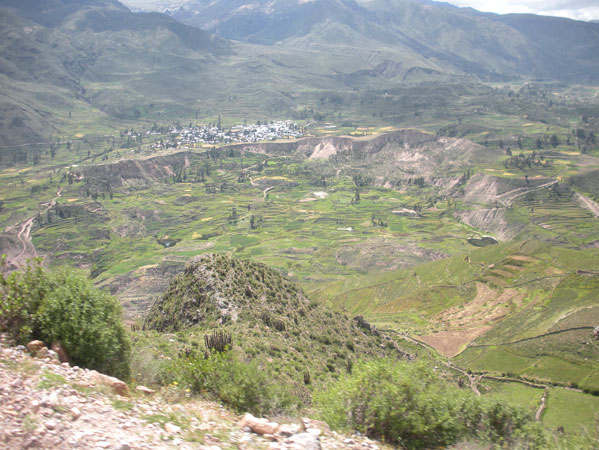
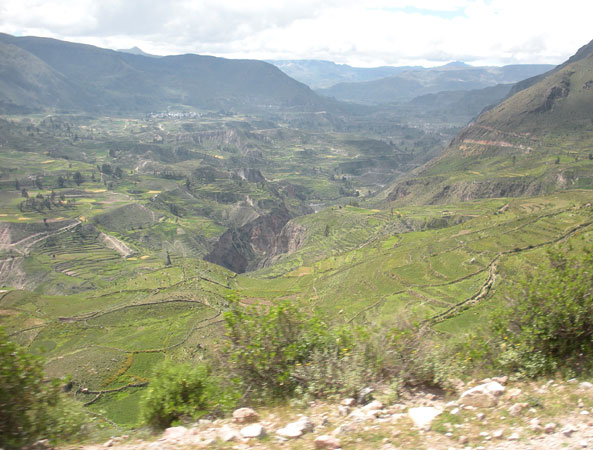
In Chivay, it was time for a snack so we bought empanadas on the bus from a woman who had most likely made them herself. Yum!
The ride back into Arequipa was beautiful but otherwise uneventful, except for the flat tire that was rapidly changed while we all waited more of less patiently.
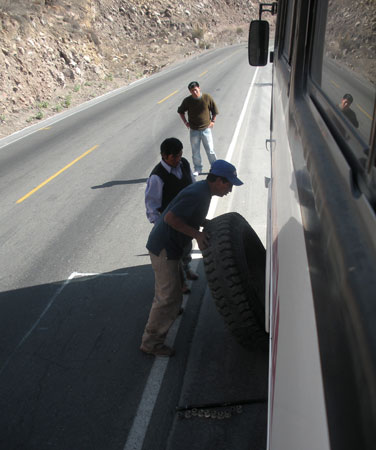
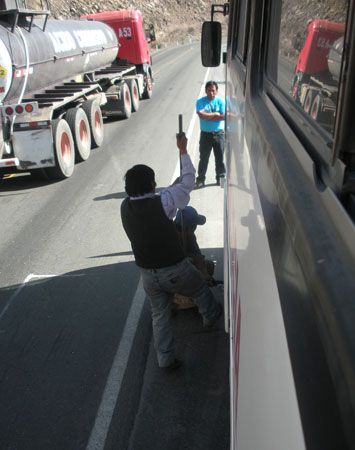
We pulled into the Terrapuerto bus station feeling as if we had had a great adventure, had seen incredible scenery and amazing geology, and had a brief view into life in a remote Peruvian village.
Click here to return to our Central and South America - Spring 2010 page
![]()